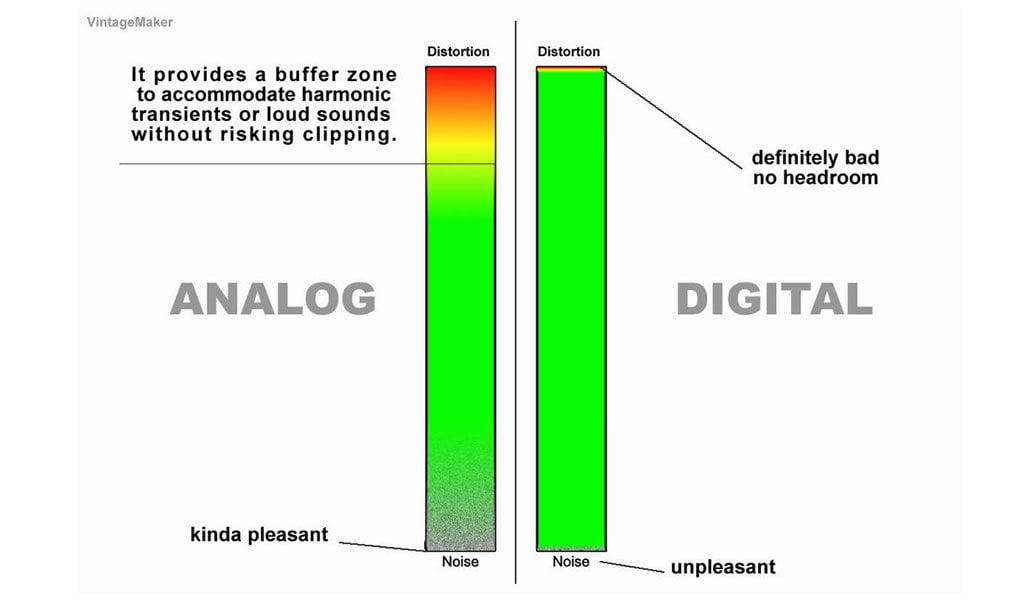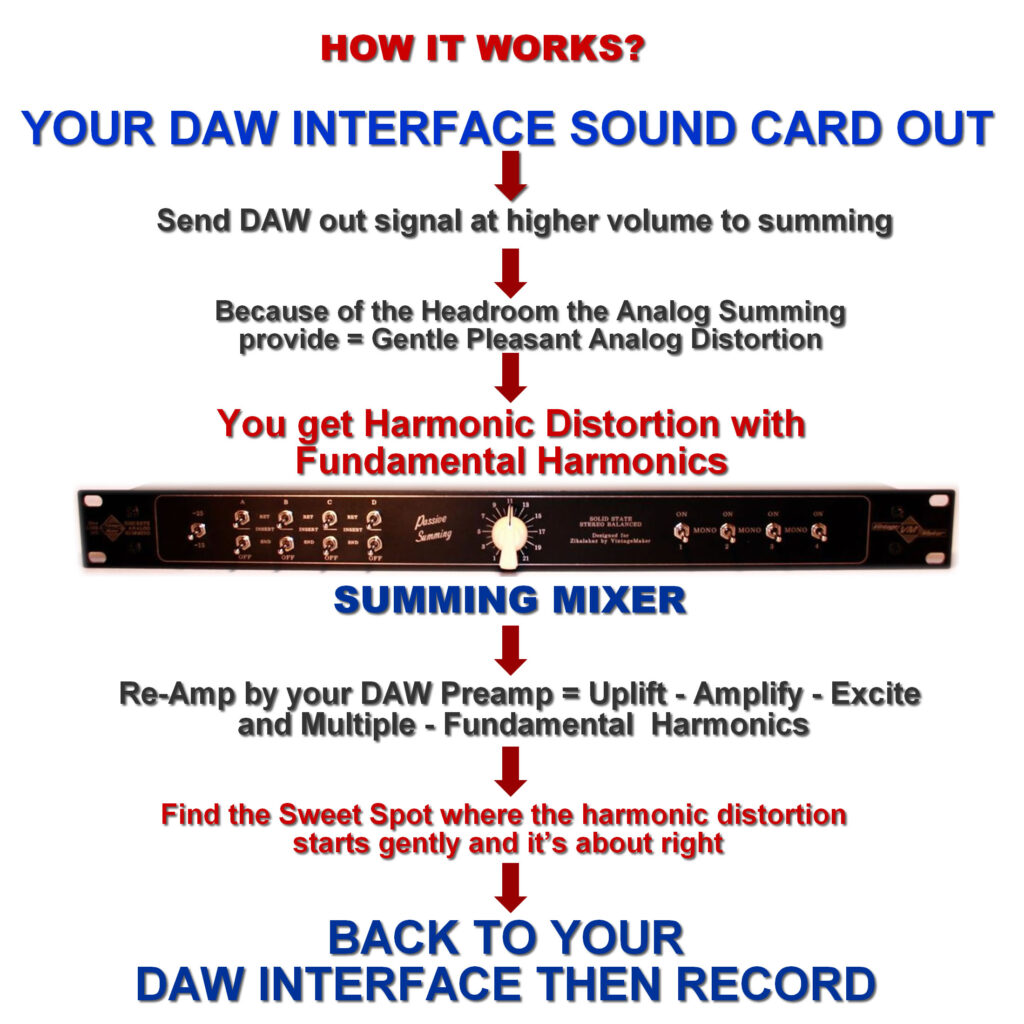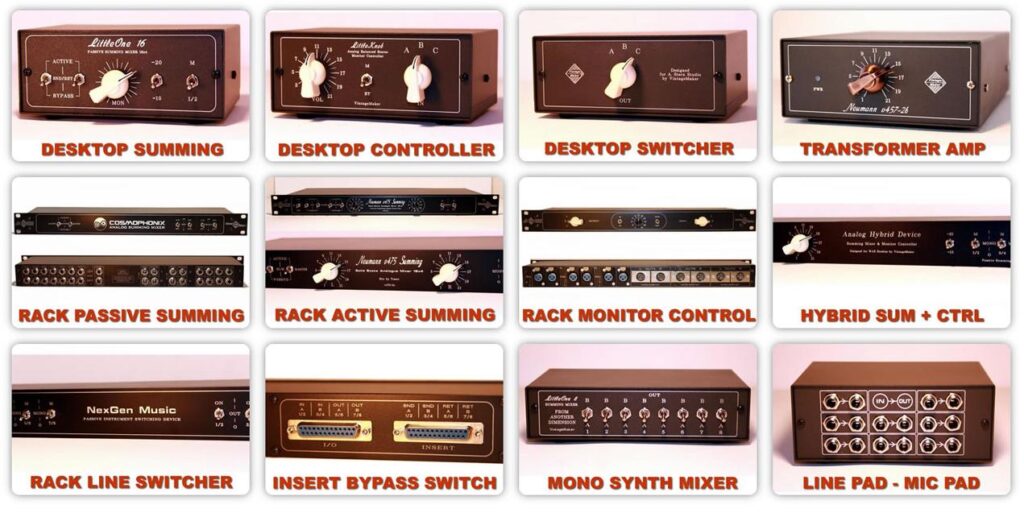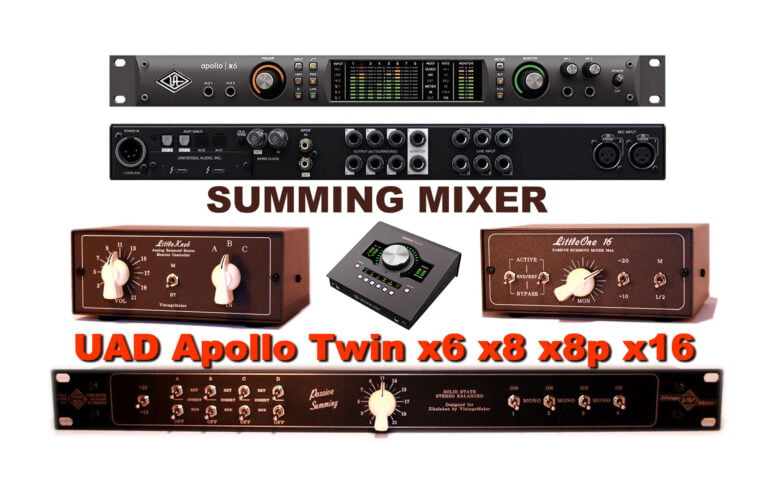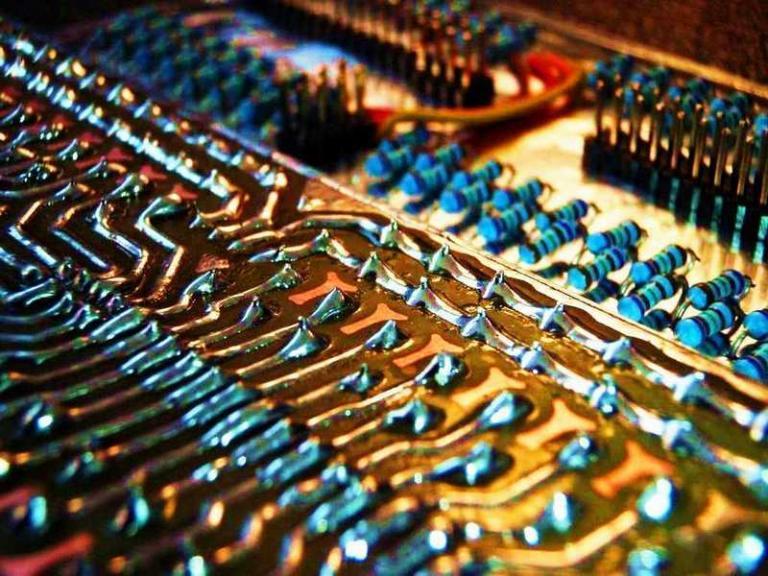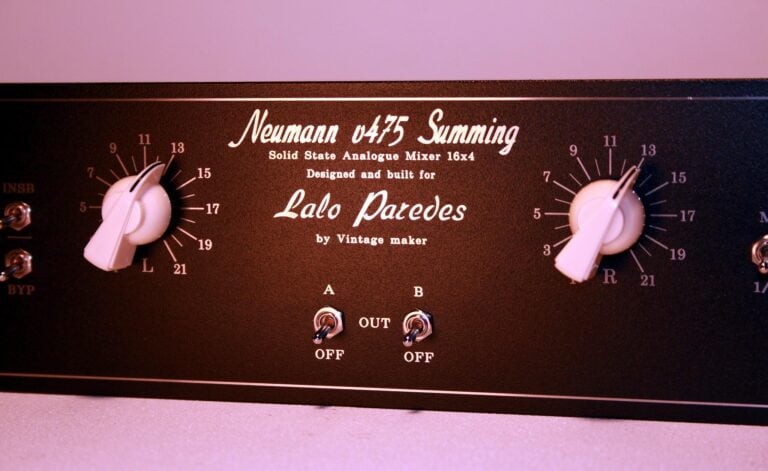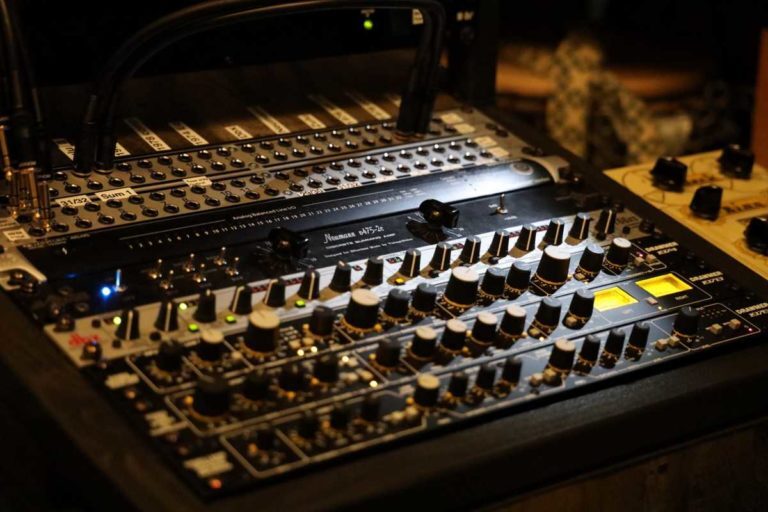
Analog Summing Mixer Headroom
What does analog summing mixer headroom mean in audio studio?
Headroom refers to the margin between the maximum signal capacity of an audio system and the actual signal level present in the system. When discussing audio equipment, headroom is typically measured from the nominal level (average level). In the context of mixing and mastering, headroom is often calculated from the peak level of the mix or master bus.
Analog Summing Mixer Headroom creates a buffer zone for harmonics,transients, and loud sounds, reducing the chance of clipping. This leads to a more dynamic, saturated expansive, and three-dimensional sound.
- Summing Mixer Analog Circuit = Headroom
- Headroom = Safe zone for your music
- Headroom give place for = harmonics, transients = Warm Analog Sound
- Headroom give place for = instrument separation = 3D deepth in the panorama field
Why does analog seem to have more headroom compared to digital? Is that a valid observation?
Headroom, in the context of audio, is quantified as the number of decibels you can exceed the standard operating level before reaching 1% distortion. VintageMaker Analog Summing frequently provides a substantial 20-25 dB buffer zone for harmonics, transients, and loud sounds, thereby lowering the risk of clipping.
- Digital systems always max out at 0 dBFS
- Analog systems typically max out at +24 dBu (even though dBu isn’t technically a measurement of peak levels).
- Analog systems usually reach their limit at +24 dBu, even though it’s worth noting that dBu isn’t a precise measurement of peak levels.
- An analog device calibrated at a nominal level of +4 dBu and with a maximum of +24 dBu provides 20 dB of headroom.
Headroom serves as a safety margin, as a safe buffer.
It indicates the system’s capacity to accommodate additional signal levels beyond nominal or peak values. The amount of headroom can be context-specific, whether referring to the device or the signal it carries. In practice, it’s advisable to maintain ample headroom during recording and mixing. The mastering phase is where we utilize this headroom, employing specialized processes to elevate audio levels while sidestepping clipping.
Does analog summing make a difference?
Is there any real value in summing mixers – Is it necessary to have a summing mixer? How important is analog summing? read more…..
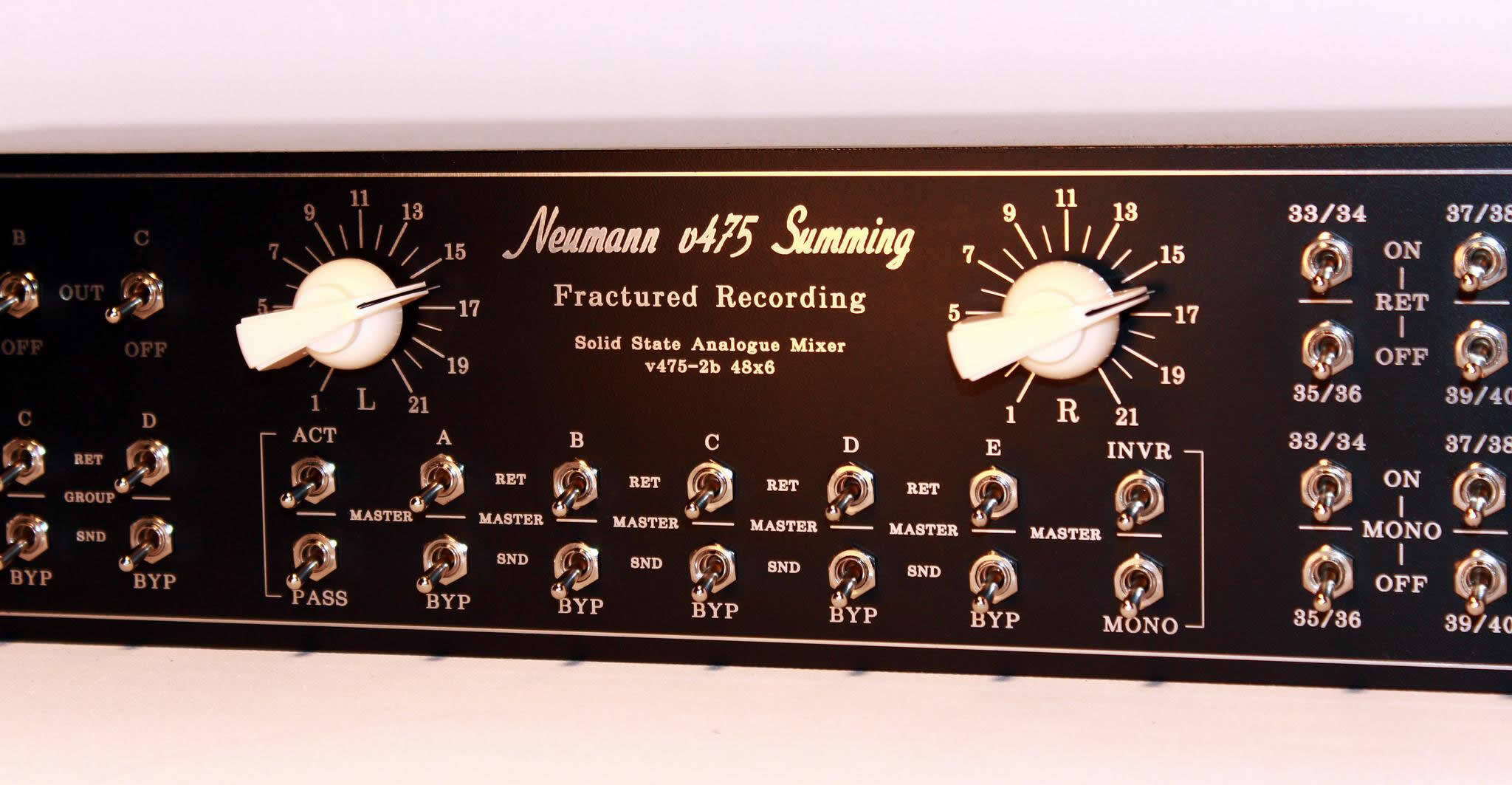
Headroom is essential
As it provides a buffer zone for harmonics, transients, or loud sounds without risking clipping. This allows for a more dynamic, open, wide, and deep 3D sound in your recordings. By maintaining optimal headroom, you can ensure that your audio remains clean and free from distortion, resulting in a more professional and polished sound.
